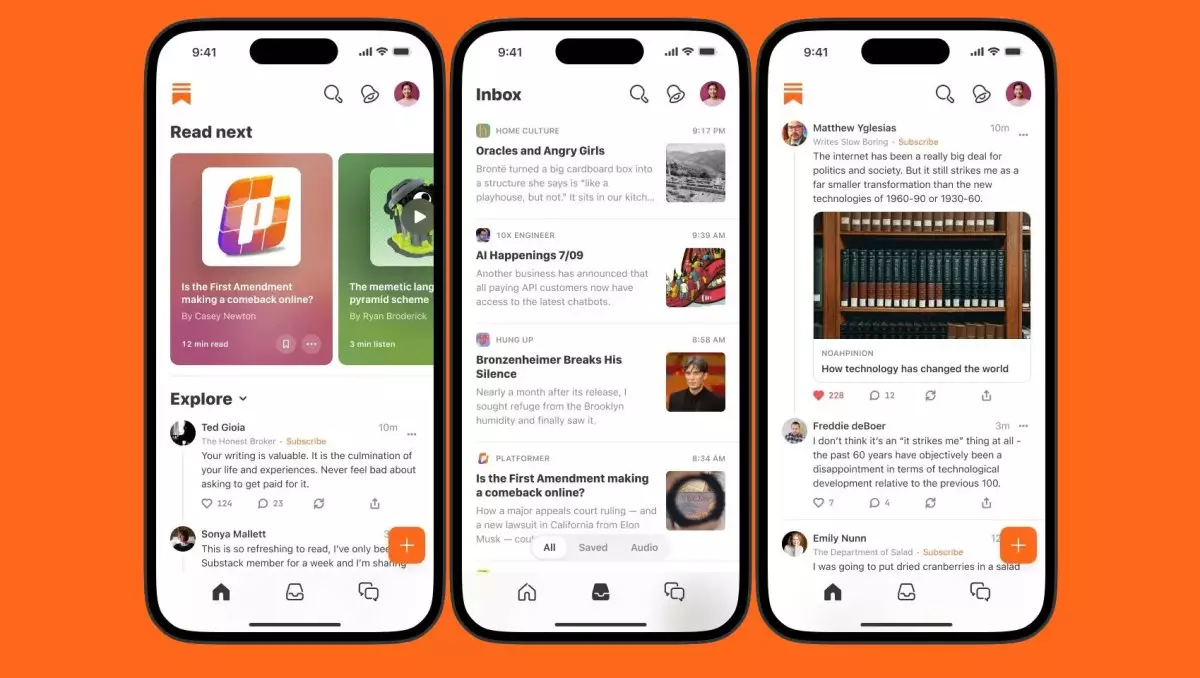In an era where digital content consumption is rapidly shifting toward mobile platforms, Substack, a prominent publishing platform for independent writers and newsletters, is making an assertive push into the mobile app space. By offering free subscriptions exclusively through its app, Substack aims to enhance user engagement and capitalize on a growing trend of mobile-first interactions. This article analyzes the implications of Substack’s recent strategies and the mixed responses from users as the app garners a significant increase in downloads.
Substack’s new approach directs users to download its mobile app to claim gifted subscriptions, creating a streamlined pathway to foster increased app engagement. By sending out enticing emails labeled with phrases such as “Here’s $6” or “Here’s $7,” Substack simplifies the process for recipients but does impose a condition: users must access this offer via the app, not their desktop. Upon attempting to redeem the gifts from a computer, users find themselves redirected to a pop-up that urges them to download the app first. This strategy not only serves the practical purpose of app proliferation but also encourages users to engage with content in a mobile setting.
While the proposal might seem beneficial and innovative for some, others critique the overreliance on app usage. Detractors argue that Substack does not necessarily require a dedicated mobile application to serve its purpose. Instead, they express that such offers should be accessible to all users, regardless of their chosen platforms. This feedback highlights a significant tension within the user base regarding the necessity and utility of the app in the broader ecosystem of content consumption.
The reactions to Substack’s campaign have been decidedly mixed. Advocates acknowledge the brilliance of providing a targeted incentive to drive app downloads, emphasizing the potential for deeper engagement and a tighter community of subscribers. Marketing professionals have commended the strategic pivot as a clever method for increasing revenue, especially during a time when many publishers could benefit from a more robust presence in the mobile domain.
Conversely, the criticisms reflect a resistance among some users to embrace app-centric models, highlighting the irritation that arises when accessing content becomes contingent on app installation. Such sentiments reveal a broader hesitation around mobile applications in general, suggesting that some users prefer the flexibility and simplicity of web access over app downloads, which can be perceived as a barrier to entry.
Despite the mixed feedback, Substack’s strategy appears to yield positive results. Data from Appfigures indicates a notable surge in daily downloads of the Substack app, escalating from approximately 7,752 on October 31 to 17,382 by November 3. This spike is particularly striking in the context of approaching election season—traditionally a time when news consumption spikes as users seek real-time updates.
Moreover, the statistics reveal that mobile users are proving to be significantly more engaged than their desktop counterparts. The mobile app has overtaken conventional recommendation systems as the primary vehicle for subscription growth, with the app driving 3 million subscriptions in one month compared to 2 million generated by recommendations. This shift suggests that users who interact through the app are more likely to convert into paying subscribers.
Substack’s approach to push for mobile app adoption reflects a keen understanding of changing consumption patterns in the digital landscape. With mobile devices increasingly becoming the primary means through which users access content, Substack’s decision to prioritize the app is a forward-looking strategy that could enhance its relevance in a competitive market.
As the company continues to gather data on user engagement patterns, it is likely to explore additional methods to bolster app utilization, including optimizing user experience, enhancing features, and expanding content visibility through tailored notifications. The insights gained from this initiative will undoubtedly inform how Substack positions itself within the landscape of digital publishing.
While Substack’s campaign to foster mobile app usage has garnered a mixed bag of feedback, the initial results underscore a substantial uptick in engagement and subscription conversion rates. The ramifications of this strategic direction may solidify Substack’s status as a leading platform, provided it hears out and addresses its user base’s concerns moving forward.

